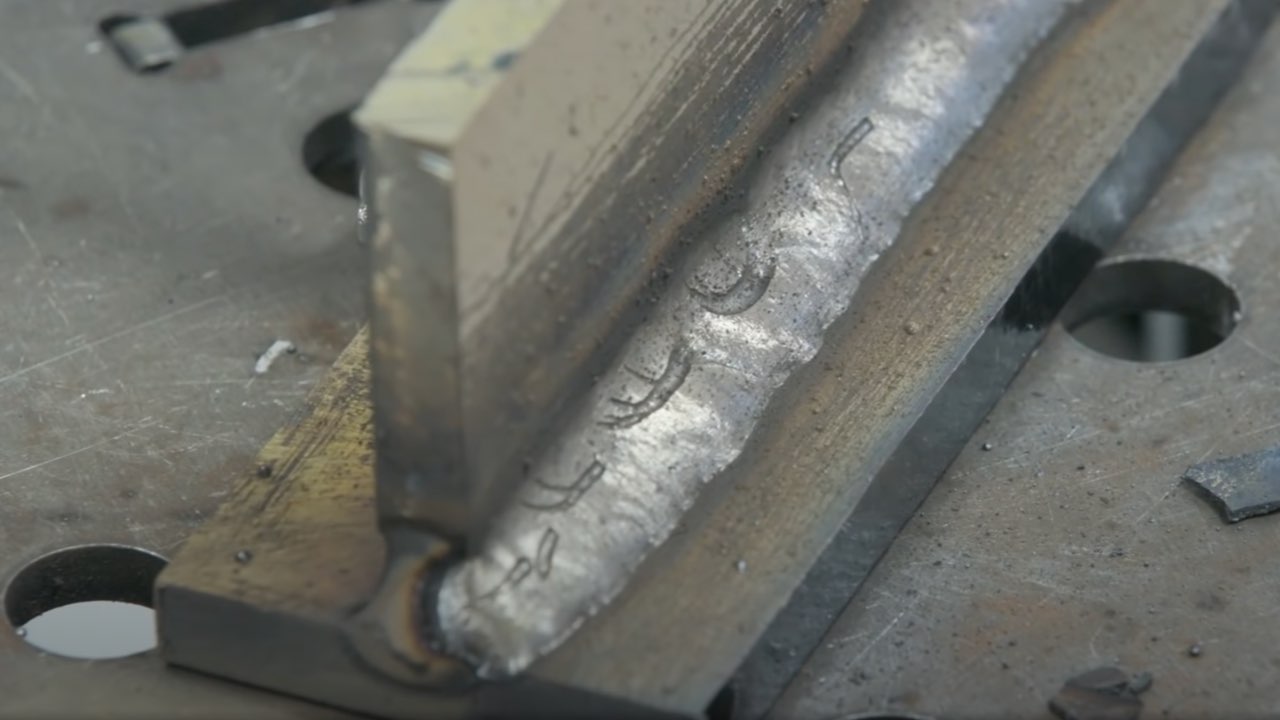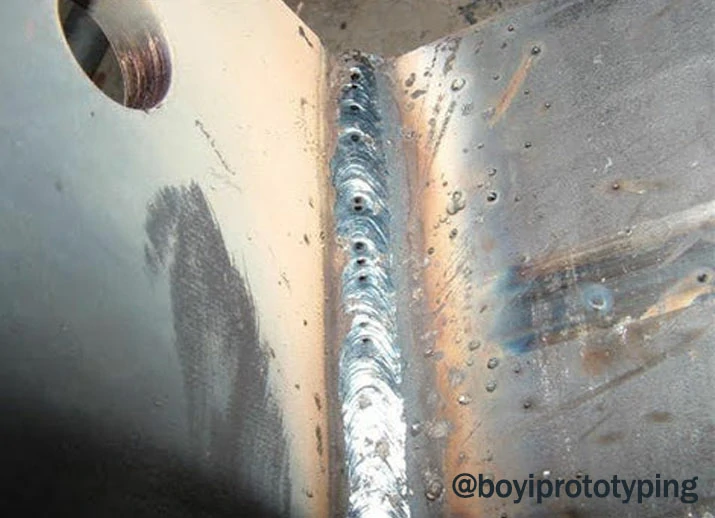Unraveling the Secret of Porosity in Welding: Tips for Minimizing Flaws and Maximizing Quality
In the detailed globe of welding, porosity remains a persistent challenge that can dramatically impact the top quality and stability of bonded joints. As we dive right into the depths of porosity in welding, discovering the keys to its avoidance and control will certainly be vital for professionals looking for to understand the art of high-quality weldments.
Comprehending Porosity in Welding
Porosity in welding, a common problem run into by welders, refers to the presence of gas pockets or spaces in the bonded material, which can compromise the integrity and top quality of the weld. These gas pockets are generally caught throughout the welding process due to different factors such as incorrect protecting gas, infected base products, or incorrect welding specifications. The formation of porosity can deteriorate the weld, making it at risk to cracking and corrosion, inevitably leading to structural failures.
Comprehending the origin creates of porosity is essential for welders to efficiently stop its incident. By recognizing the significance of preserving correct gas protecting, ensuring the cleanliness of base materials, and optimizing welding settings, welders can considerably decrease the chance of porosity formation. Furthermore, utilizing techniques like pre-heating the base material, utilizing appropriate welding techniques, and performing comprehensive evaluations post-welding can further aid in minimizing porosity problems. In general, an extensive understanding of porosity in welding is vital for welders to produce high-grade and durable welds.

Typical Sources Of Porosity
When evaluating welding procedures for possible top quality problems, understanding the usual causes of porosity is essential for keeping weld honesty and stopping architectural failings. Porosity, characterized by the existence of tooth cavities or spaces in the weld metal, can substantially compromise the mechanical buildings of a welded joint.
Additionally, welding at inappropriate criteria, such as excessively high traveling rates or currents, can create excessive disturbance in the weld pool, capturing gases and causing porosity. By dealing with these typical reasons through proper gas shielding, product preparation, and adherence to optimal welding parameters, welders can reduce porosity and boost the high quality of their welds.
Methods for Porosity Avoidance
Carrying out efficient safety nets is essential in reducing the occurrence of porosity in welding procedures. One method for porosity avoidance is making sure proper cleaning of the base steel prior to welding. Impurities such as oil, grease, corrosion, and paint can lead to porosity, so thorough cleansing making use of proper solvents or mechanical approaches is important.

One more secret safety net is the option of the ideal welding consumables. Making use of top quality filler products and securing gases that appropriate for the base steel and welding process can considerably lower the risk of porosity. Furthermore, maintaining check out this site proper welding criteria, such as voltage, present, take a trip speed, and gas circulation price, is crucial for porosity avoidance. Differing the suggested setups can result in inappropriate gas insurance coverage and insufficient combination, resulting in porosity.
Moreover, using proper welding techniques, such as maintaining a constant travel speed, electrode angle, and arc length, can help avoid porosity (What is Porosity). Adequate training of welders to guarantee they comply with best methods and top quality control treatments is also crucial in decreasing porosity flaws in welding

Ideal Practices for High Quality Welds
Making sure adherence to market requirements and proper weld joint prep work are basic facets of achieving constantly high-grade welds. Along with these foundational actions, there are numerous finest methods that welders can apply to even more enhance the high quality of their welds. One key technique is maintaining correct cleanliness in the welding location. Contaminants such as oil, grease, rust, and paint can detrimentally affect the high quality of the weld, leading to flaws. Thoroughly cleaning up the workpiece and surrounding location before welding can assist minimize these problems.
Another finest technique is to carefully choose the ideal welding parameters for the particular products being signed up with. This consists of setting the correct voltage, current, travel rate, and shielding gas circulation price. Correct parameter choice makes certain optimal weld penetration, combination, and overall top quality. Furthermore, making use of high-quality welding consumables, such as electrodes and filler metals, can dramatically impact the final weld high quality. Investing in premium consumables can lead to stronger, more resilient welds see here with fewer problems. By complying with these finest methods, welders can constantly generate high-grade welds that fulfill sector criteria and go beyond consumer assumptions.
Importance of Porosity Control
Porosity control plays an essential duty in making certain the honesty and top quality of welding joints. Porosity, identified by the presence of dental caries or gaps within the weld metal, can considerably endanger the mechanical residential properties and structural stability of the weld. Too much porosity damages the weld, making it a lot more at risk to cracking, corrosion, and overall failing under operational lots.
Efficient porosity control is vital for maintaining the wanted mechanical buildings, such as stamina, ductility, and sturdiness, of the welded joint. What is Porosity. By minimizing porosity, welders can boost the overall top quality and reliability of read here the weld, making certain that it satisfies the efficiency demands of the intended application
Moreover, porosity control is crucial for attaining the wanted visual look of the weld. Extreme porosity not only weakens the weld but additionally diminishes its visual charm, which can be essential in industries where aesthetic appeals are essential. Correct porosity control methods, such as utilizing the appropriate shielding gas, managing the welding specifications, and making sure proper cleanliness of the base products, are essential for generating high-quality welds with marginal defects.

Conclusion
In conclusion, porosity in welding is an usual flaw that can compromise the quality of the weld. By comprehending the root causes of porosity and implementing appropriate prevention methods, welders can lessen flaws and attain greater high quality welds. It is vital to manage porosity in welding to make certain the stability and toughness of the final product. Carrying out finest practices for porosity control is essential for achieving ideal welding outcomes.